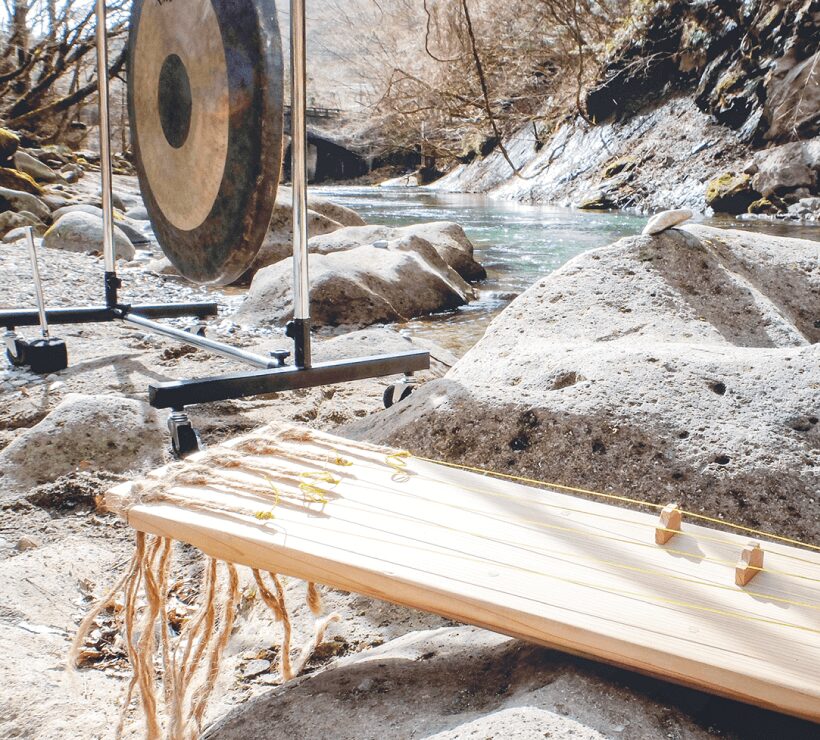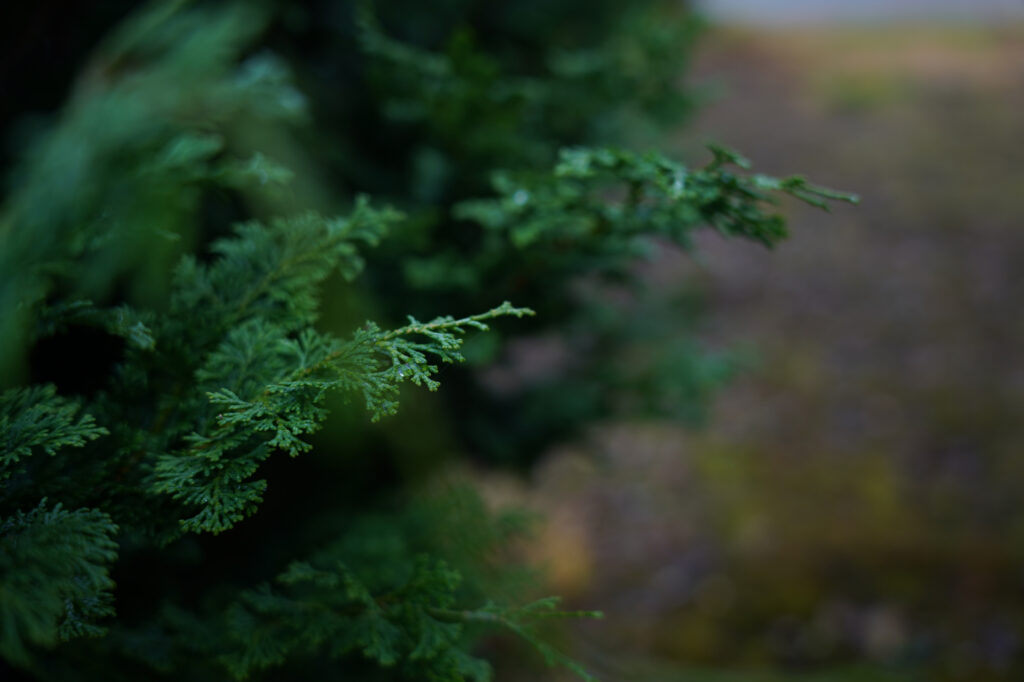
Here we share excerpts from a conversation with Mr. Taro about Gagaku, traditional Japanese music, and more. Enjoy this mix of Gagaku insights and occasional, lively digressions!
The following excerpt is from a conversation with Taro Ishida on topics like Gagaku and traditional Japanese music. While we delve into Gagaku here and there, expect some tangents that add to the story’s charm.
On November 1, 2024, Taro Ishida released his new work Ranjo / Taishoku-cho Netori. Have you had a chance to listen?
After serving as the lead arranger for Disney+’s acclaimed series Shogun, which won an astonishing 18 Emmy Awards, including Best Drama, Lead Actor, Actress, and Sound Design, Taro felt it was time to explore new musical territories. With careful thought, repeated drafts, and even a full reset of the initial score, he spent over three months refining his work, finally emerging from his creative tunnel with a piece that opens new doors in Japanese music.
Today, we’d like to share some behind-the-scenes stories from the recording of Ranjo / Taishoku-cho Netori, performed by some of Japan’s top traditional and modern instrumentalists:
For this work, Gagaku instruments like the Hichiriki, Gaku-biwa, Sho, and Ryuteki play a major role.
Curious about these instruments? Ishida has provided an introduction to the Hichiriki, Sho, and Ryuteki on our website here.
The Gaku-biwa
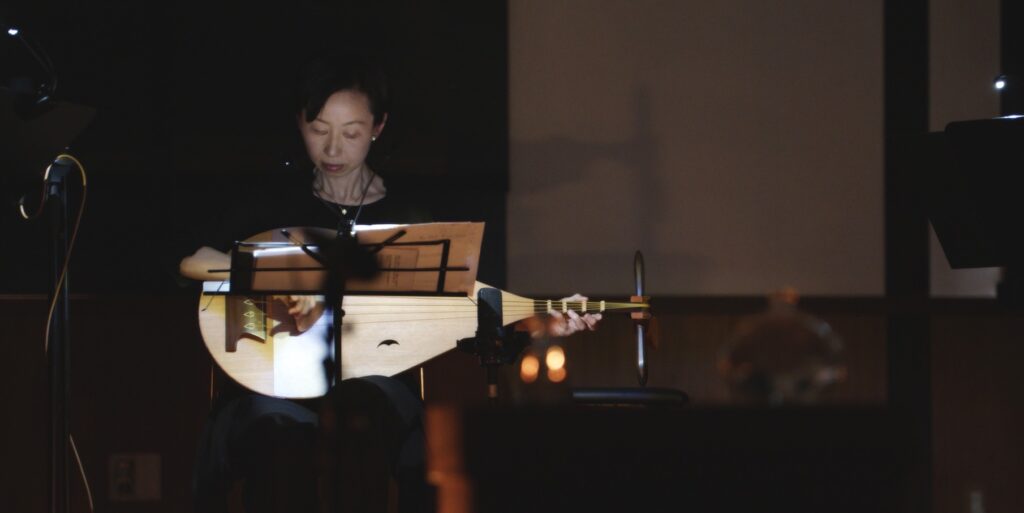
This traditional Japanese lute, used specifically in Gagaku, originates from West Asia and arrived in Japan during the Nara period. Its shape and playing technique have remained largely unchanged. In Gagaku, it plays a rhythmic role similar to the Gakuso, adding beautiful, resonant tones to music.
In the past, however, it was versatile—used for solo, accompaniment, and ensemble performances. But due to its rarity, pieces for solo Gaku-biwa gradually became “secret pieces,” shared only among a select few musicians. Consequently, by the Kamakura period, it had become mainly an ensemble instrument in Gagaku.
This idea of “secret pieces” is intriguing, isn’t it? Not only the Gaku-biwa but many Gagaku instruments have similar hidden repertoires, mentioned in classical Gagaku texts such as Gakkaroku from the Edo period.
I’ll have to look into it...
The Powerful Essence of Gagaku and the Emotions of the Performers
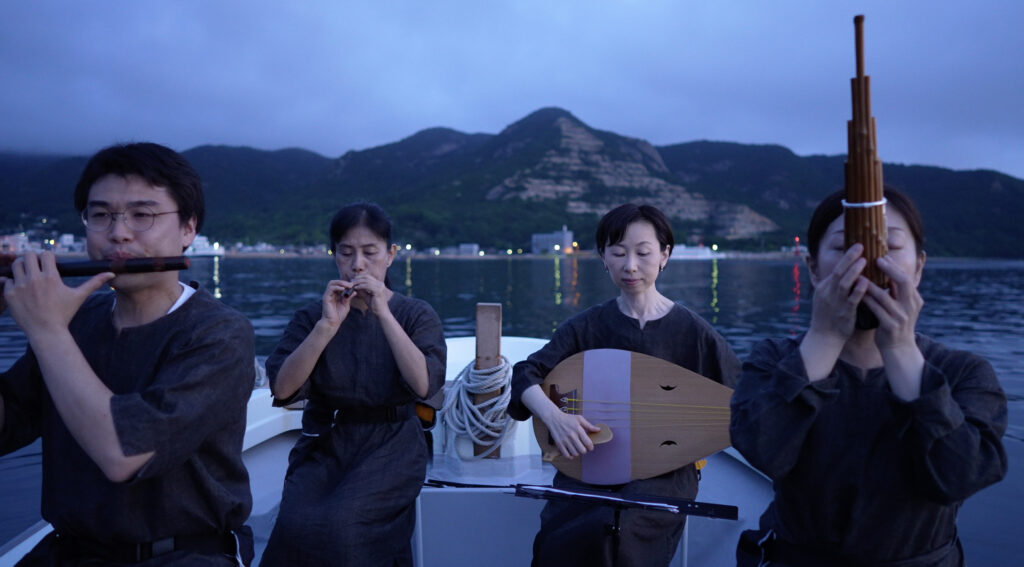
While the original piece Ranjo doesn’t include the Hichiriki and Sho, Ishida says the distinct sounds of these two instruments created an ethereal atmosphere that wraps around the entire piece.
Taro mentioned that he heard some fascinating insights from each of the two musicians playing these unique instruments.
Taro: For this new piece, I asked both the Gagaku and string players to perform in a way that felt like they were clashing, challenging each other. And they said it was “so much fun!” They said they’d felt like they were always playing in a perfect, neat setting before, but now it was more like a battle—everyone playing freely, fully engaged, and able to move as they liked. It was like they embraced that bit of “dissonance.”
Me: Gagaku itself has this sense that beauty comes from elements colliding with one another, doesn’t it?
Taro: Yeah, it’s like it doesn’t need to match up perfectly. It’s more about a natural balance, no constraints. Even Hichiriki player Hitomi Nakamura said she felt completely uninhibited. She always says Gagaku feels like stirring up dust while you’re playing—earthy, intense, like colliding sounds. Traditional Japanese music is actually quite fierce and incredibly passionate.
Me: Wow! I didn’t expect that!
Taro: During the recording, I was a bit concerned the sound of the Gagaku instruments might get drowned out by the strings. But in reality, only the Gagaku sound could be heard—the strings were completely overshadowed. I was stunned!
Me: That’s incredible! The elegance of Gagaku often overshadows how powerful it actually is. It’s like the instruments are connected with the musicians themselves, almost becoming one. I always thought they’d be played with a sense of calm and tranquility, but now I feel there’s a very human side to it. And I heard that with the Sho, because of how the sound is produced by both blowing and drawing in air, it’s seen as an instrument that aligns with the natural rhythm of human life.
Taro: Yes, Sho player Hanako Nakamura also said in an interview that, rather than producing sounds that come from the heavens, she feels more like she’s drawing energy from the roots of a tree, pulling it up, and releasing it. “It’s not something sparkling and ethereal—it’s actually kind of muddy,” she said. She also mentioned that while she might keep a calm face while playing, it’s exhausting, even to the point of trembling.
Me: Not showing it on one’s face… that feels like such a distinctly Japanese aesthetic, doesn’t it? So your new piece really captures that energy, doesn’t it? I get it now.
How about that? Are you feeling even more intrigued by Gagaku and its instruments?
Next time, let’s dive deeper into the Sho. Why start with this instrument? A distinguished professor and performer once said, “Much of what makes Gagaku unique lies within the Sho.”
Let’s venture into the forest of the Sho together.
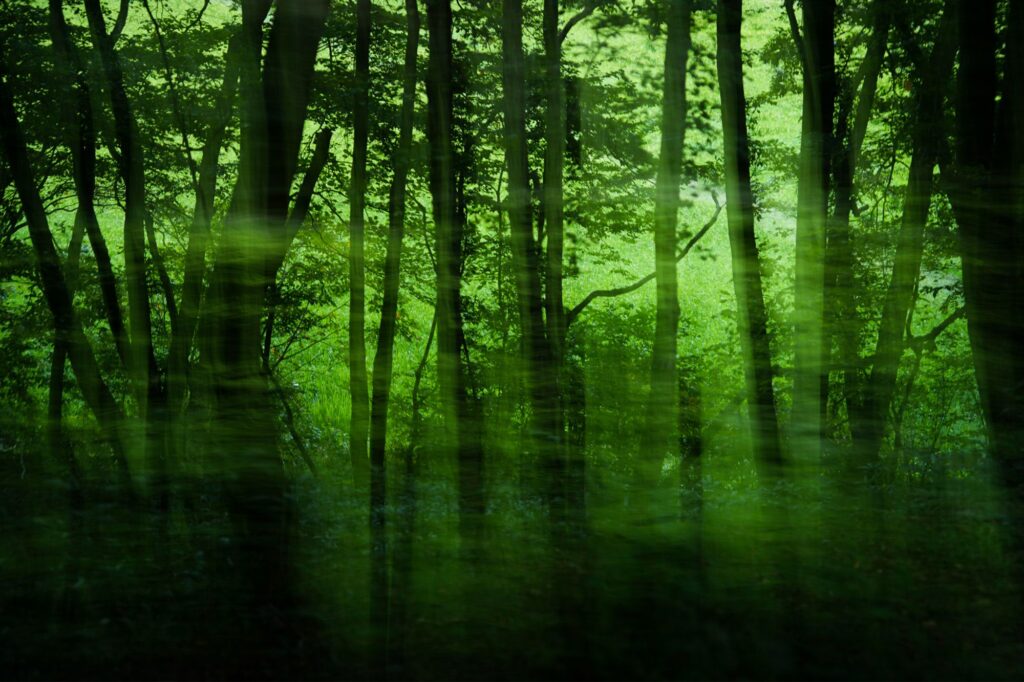
Written by Atsuko Aoyagi / ao.Inc.
#DailyThoughts #JapaneseTraditionalMusic #Composition
#Gagaku #ComposingGagaku #NonMusic #GagakuPerformance
#FilmMusic #CinematicMusic #SpatialMusic #GagakuStories #SideNotes
#WhyIs #Gagaku #Layer #AndMysterious
